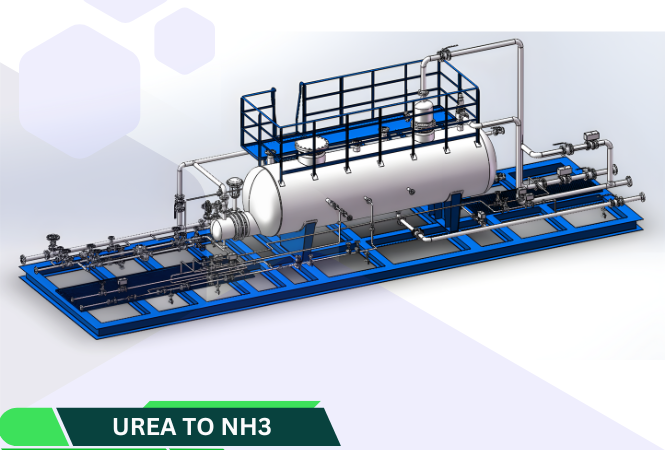ACRYLIC ACID
Acrylic acid is a colorless, corrosive, flammable liquid with a tart smell. It's used to make plastics, paints, adhesives, and other products.
Properties
Chemical formula: CH₂=CHCOOH
Boiling point: 141°C
Melting point: 14°C
Flash point: 68°C
Miscible with water, alcohols, ethers, and chloroform


AA APPLICATIONS
Acrylic acid (CH₂=CHCOOH) is a versatile organic compound with a carboxylic acid group and a double bond, making it highly reactive. It is widely used in industrial and consumer applications, primarily as a precursor for polymers and copolymers. Here are its key applications:
1. Polymers & Superabsorbent Materials
Superabsorbent Polymers (SAPs): Used in diapers, sanitary napkins, and adult incontinence products due to their ability to absorb large amounts of liquid (up to 1000x their weight).
Polyacrylic Acid (PAA): Used in detergents, dispersants, and water treatment (as a scale inhibitor).
Acts as a thickener in cosmetics and personal care products.
2. Adhesives & Sealants
Pressure-sensitive adhesives (PSAs) for tapes, labels, and stickers. Emulsion polymers for construction adhesives and coatings.
3. Paints & Coatings
Acrylic latex paints (water-based) for architectural and industrial coatings. Provides durability, weather resistance, and gloss retention.
4. Textiles & Leather
Fabric finishes to improve wrinkle resistance and water repellency. Leather treatment for softness and durability.
5. Detergents & Cleaning Agents
Polyacrylates act as anti-redeposition agents, preventing dirt from reattaching to fabrics. Used in industrial and household cleaners.
6. Water Treatment
Scale and corrosion inhibitors in cooling and boiler water systems. Flocculants for wastewater treatment.
7. Personal Care & Cosmetics
Thickening agent in lotions, creams, and gels. pH adjuster in skincare products.
8. Medical & Pharmaceutical
Hydrogels for wound dressings and drug delivery systems. Medical adhesives for surgical applications.
9. Industrial Applications
Lubricant additives to improve viscosity. Paper coatings for strength and printability.
10. Emerging Uses
3D printing resins (photopolymerizable acrylics). Bio-based acrylic acid (sustainable production from renewable resources).
AA PROCESS PATHWAYS
These processes are:
Propylene undergoes catalytic oxidation to produce acrylic acid.
Glycerol is processed through dehydration/oxidation to yield acrylic acid.
Ethylene oxide is converted via carbonylation to form acrylic acid.
The fermentative route can convert glucose syrup into acrylic acid.
Another fermentative route can transform raw sugar into acrylic acid.
The Reppe synthesis method can be used to produce acrylic acid from acetylene.
PROCES DESCRIPTION
Preheating and mixing phase. After the total amount of liquid propylene is accumulated, it is vaporized in the propylene evaporator, and then overheated in the superheater, The feed mixer mixes with the humidified air phase into a reaction.
First-stage reaction. A section of the reactor is a tubular fixed bed reactor. The tube is filled with a catalyst. The raw material gas passes through the catalyst bed at a certain temperature, rapid catalytic reaction to produce products such as acrolein and some acrylic acid.
Second-stage reaction, the first stage reactor outlet gas and the additional humidified air are mixed and enter into the second stage reactor are oxidized to acrylic acid.
Quench absorption, the outlet gas of the second-stage reactor is cooled to 160-180℃ by the cooler and then enters the quench absorber. Reactant gas is absorbed in a quench absorber by about 45 wt of acrylic water solution and cooled to a low enough temperature, and then sent by acid pump to remove the acrylic acid post treatment.
Light phase separation system, the acrylic water solution is pumped by the acrylic feed to the light component fractionator. Water and some acetic acid are separated from acrylic acid by azeotropic distillation. The bottom liquor is an acrylic liquid containing a small amount of acetic acid, which is sent to the acetic acid column by the bottom pump to further separate the heavy phase.
Acetic acid removal system。In the acetic acid removal column, acetic acid, water, toluene and acrylic acid are steamed from the top of the tower by vacuum distillation, A small amount of acrylic liquid is sent to the acrylic refining column by the bottom pump to further remove the heavy part.
Acrylic acid refining, the acrylic acid is steamed from the top of the distillation tower by reduced pressure distillation. As a product, the acrylic acid is removed after cooling. The bottom of the tower is the remix containing a small amount of acrylic acid are sent to the film evaporator for vacuum evaporation to recover the acrylic acid in the heavy phase.
Waste incineration process, In the incinerator, various process waste gas, recombination, and waste water are fully burned, and the mixed gas after combustion is passed through the waste heat boiler, The gas heater is cooled to about 250 ° C and then sent into the chimney by the induced draft fan and discharged into the atmosphere.
Preparation of defoamer, an aqueous solution of defoamer is prepared by adding a quantitative defoamer into the defoamer tank. The solution is fed quantitatively by a defoamer pump into quench absorber and stripping tower.
Preparation of retarder, In the inhibitor tank, a quantitative inhibitor and a solvent are added to a certain concentration of the inhibitor solution. The solution consists of the corresponding feed pump is quantified to a specific location.
PROCESS PFD
.png)

MARKET GROWTH
Acrylic Acid market is on escalation due to the many uses of the product and rising demand in various industries. From the soft and moistened personal care products such as baby diapers and sanitary towels to the durable paints and coatings that are in high demand in the growing construction industry, acrylic acid has emerged as a critical raw material in today’s manufacturing industries. The increasing focus on green and sustainable solutions also adds to its appeal, and the growth of the developing nations, especially the Asian ones, such as India and China, also helps to drive its growth. With the increasing development of industries and changing trends in the consumption of products, the application and importance of acrylic acid will remain unquestionable in the future chemical industry, and therefore its further growth and development will remain a promising factor in the market expansion.
EQUIPMENT SUPPLY
DOWNLOADS


Add paragraph text. Click “Edit Text” to update the font, size and more. To change and reuse text themes, go to Site Styles.
UREA TO AMMOUNIA
.png)
Add paragraph text. Click “Edit Text” to update the font, size and more. To change and reuse text themes, go to Site Styles.
WFF EVAPORATOR
.png)
Add paragraph text. Click “Edit Text” to update the font, size and more. To change and reuse text themes, go to Site Styles.
